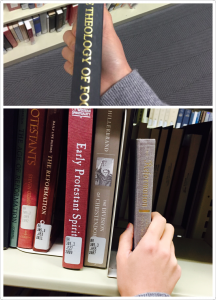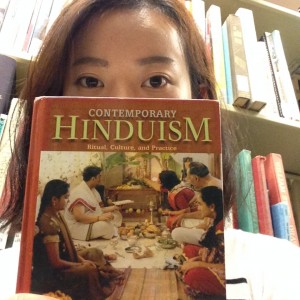Collinson, Patrick. The Reformation: A History. Oxford: Oxford University, 2004.
I searched the Lafayette library catalogue for “Calvinism and the Protestant Reformation” because I am interested in studying the history of Calvinism in the Reformation movement in Europe as it was mentioned when we were given a lecture about the Protestant Reformation during class. Specifically, I also intend to examine how Calvinism promoted the development of the Reformed Church in the Netherland. Many relevant results appeared first, which made me hard to pick up the most valuable book for my paper. Therefore, I refined my search into “Calvinism and reformed church in Netherland.” Fortunately, I found out a book specifically discusses about the Calvinist presence in the work of the Dutch Reformed Church. However, the book I was looking for was not there. But I found another book on the shelf, which was The Reformation: A History.
Altering scanning the contents of the book, I found out it primarily provides a big picture of how the Protestant Reformation developed in the 16th century Europe, including causes, patterns, and particular cases like the Reformation in the British isles. Specifically, it portrayed in details about important figures in the Reformation like Martin Luther, John Calvin, and other related people, and their theologies and politics. As the author said in the preface, he “made issues that are remote from today’s thinking and concerns as accessible as possible to the general reader who may know very little about the Reformation”. In Chapter 6 about Calvin and Calvinism, the author used plain words to analyze the driving force for John Calvin to change from a lawyer into a principal figure in the second generation of the Protestant Reformation. On top of that, the book also defined Calvinism as an international movement as English Calvinists once intervened militarily in the Netherlands and “helped to sustain churches of French and Dutch “strangers” in London.” Reading this chapter led to my further curiosity to question the relationship between Calvinist and Dutch churches during the late sixteenth century.
I plan to continue read this chapter as it provides me basic information about Calvinism and its influence in the Netherlands. Though it does not perfectly fit my needs—the Calvinist presence in Reformed church in the Netherlands, I still found it interesting to read, especially the way it described historical cases vividly, like “Luther caught in a thunderstorm”, rather than just tediously provided me with tedious chronology. Therefore, I considered it useful and informative for helping me to clearly comprehend the causes and facts of Calvinism first.
Some neighboring books were also interesting and worth of reading, such as Early Protestant Spirit and The Theology of Food. Similar to the book I chose to read, Early Protestant Spirit portrayed some famous figures and their biography. Additionally, the latter one specifically mentioned food preparation during the Eucharist and how bread and wine were associated with Jesus.

